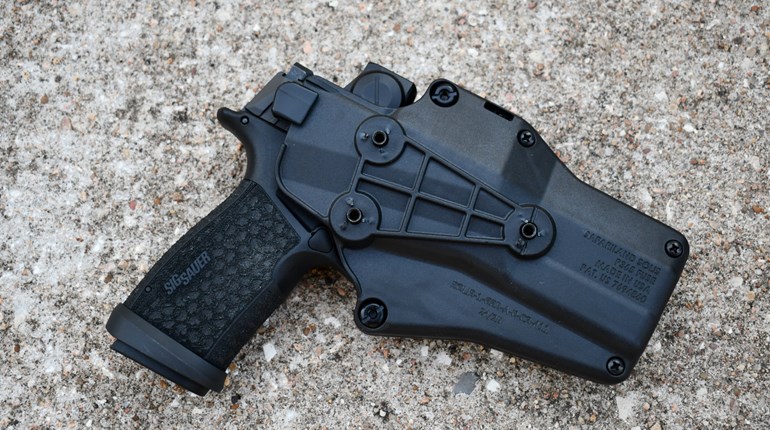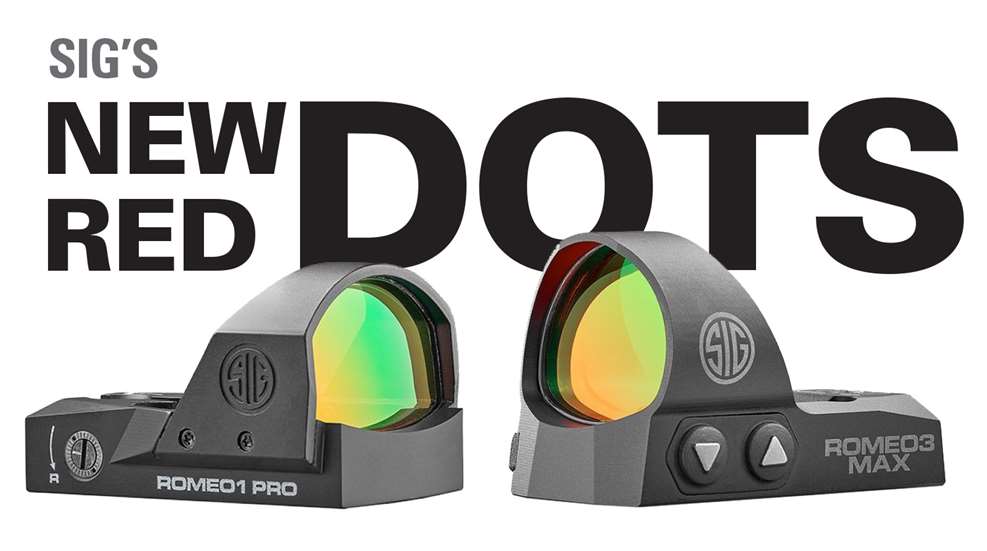
Editor’s note: SIG Sauer’s Electro-Optics division has fused together advanced electronic technologies, superior HD glass and military-inspired designs to obtain maximum clarity, accuracy and performance. And, by including input for these products from the likes of Team SIG shooters Daniel Horner, Lena Miculek and Max Michel, as well as law enforcement and the military, the folks at SIG have developed truly gamechanging optics for all types of shooters.
Romeo1 Pro
When SIG introduced its Romeo1 miniature reflex sight, I thought it was one of the most-effective and user-friendly red dots I’d seen. With the introduction of the Romeo1 Pro, I was curious to see if SIG could improve on that design.
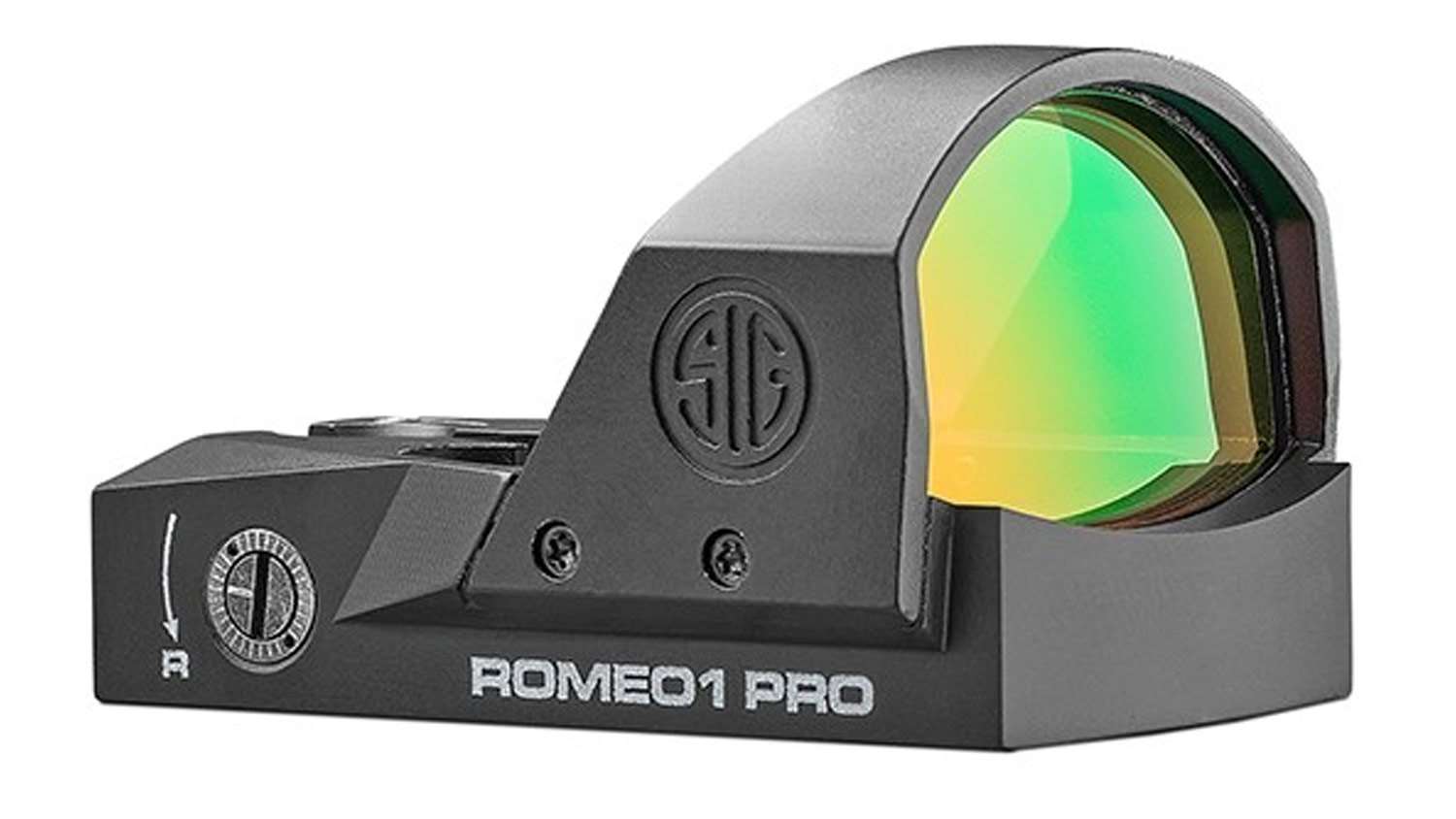
The Romeo1 Pro ($479.99) is dimensionally identical to the Romeo1, with the exception of a slight (maybe 1/64-inch) extension on the lower front end. It’s available with either a 3 MOA or 6 MOA dot. The mounting footprint is the same and SIG notes it will fit the optics-ready P320 X-Five Legion (and presumably any slide cut for the original Romeo1). The sight window is the same 30mm size, and the top-loading battery uses the commonly available CR1632 battery.
The operating controls are identical to the Romeo1—an Up and Down button on the left side. Depress either for two seconds to turn the sight on and do the same to turn the sight off. Turning the sight back on returns you to the same power setting previously set. As well, the sight features MOTAC (SIG’s Motion Activated Illumination System). When the sight is turned on and detects no movement for two minutes, it goes to sleep and the dot turns off. The first movement wakes it up, and the dot comes back on at the previously set brightness level. I ran several tests with a stop watch and it worked every time. Windage and elevation adjustments are the same precise, 1 MOA clicks.
That’s no different than the Romeo1. But there were a couple of pleasant surprises.
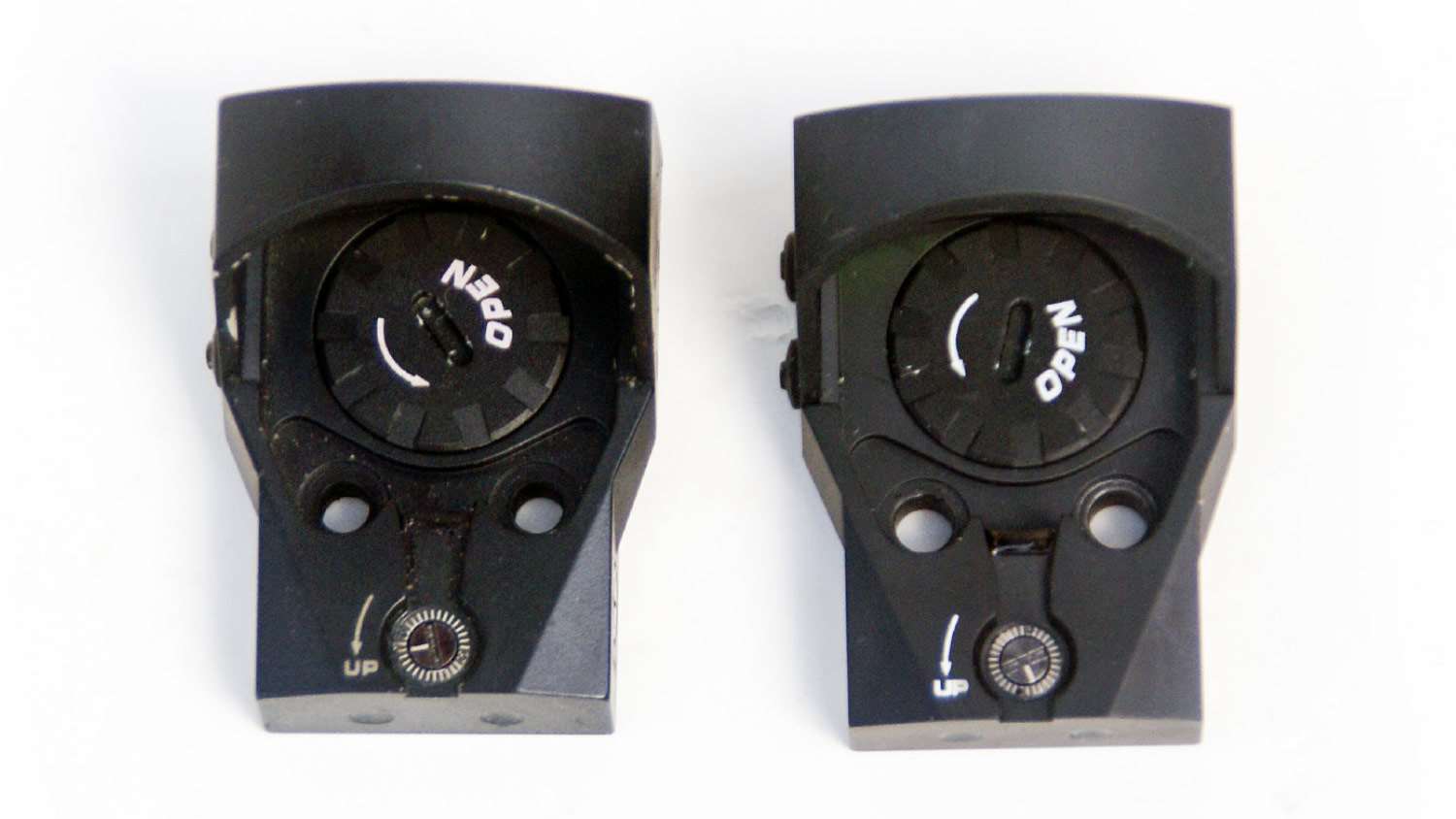
The Romeo1 Pro comes with a sturdy steel sight shield. The sight slips inside it and both are then locked into the mount. It provides almost bullet-proof protection from the normal bangs and dings that a holstered gun can experience during a match day, but allows instant access to the two control buttons. As well, there is a very effective slip-on rubber lens cover that is a major improvement over the rather flimsy lens cap on the original Romeo1.
The second surprise was the new light emitter package that SIG claims offers increased dot brightness and a battery life of up to 20,000 hours. I suspect it’s the same package used on the Romeo3 Max that I recently tested. It now provides 12 power settings—10 daylight and two NV. And like the Romeo3 Max, when the top power setting is reached it blinks five times to let you know you’re there. That’s a handy feature at the Load and Make Ready.
The test sight provided to me was the 3 MOA model. I have no gun cut for the direct Romeo slide mount, but an accessory Picatinny rail mount gave me options. I decided against mounting it on my rimfire pistol, since 3 MOA is a bit small for me when the sight is 20-plus inches forward of my eyes. Instead, I slipped it on to my Ruger PC9 PCCO gun and headed to my range. When I got to the range and started the sight-in, I realized I could have put it on my RFPO gun.
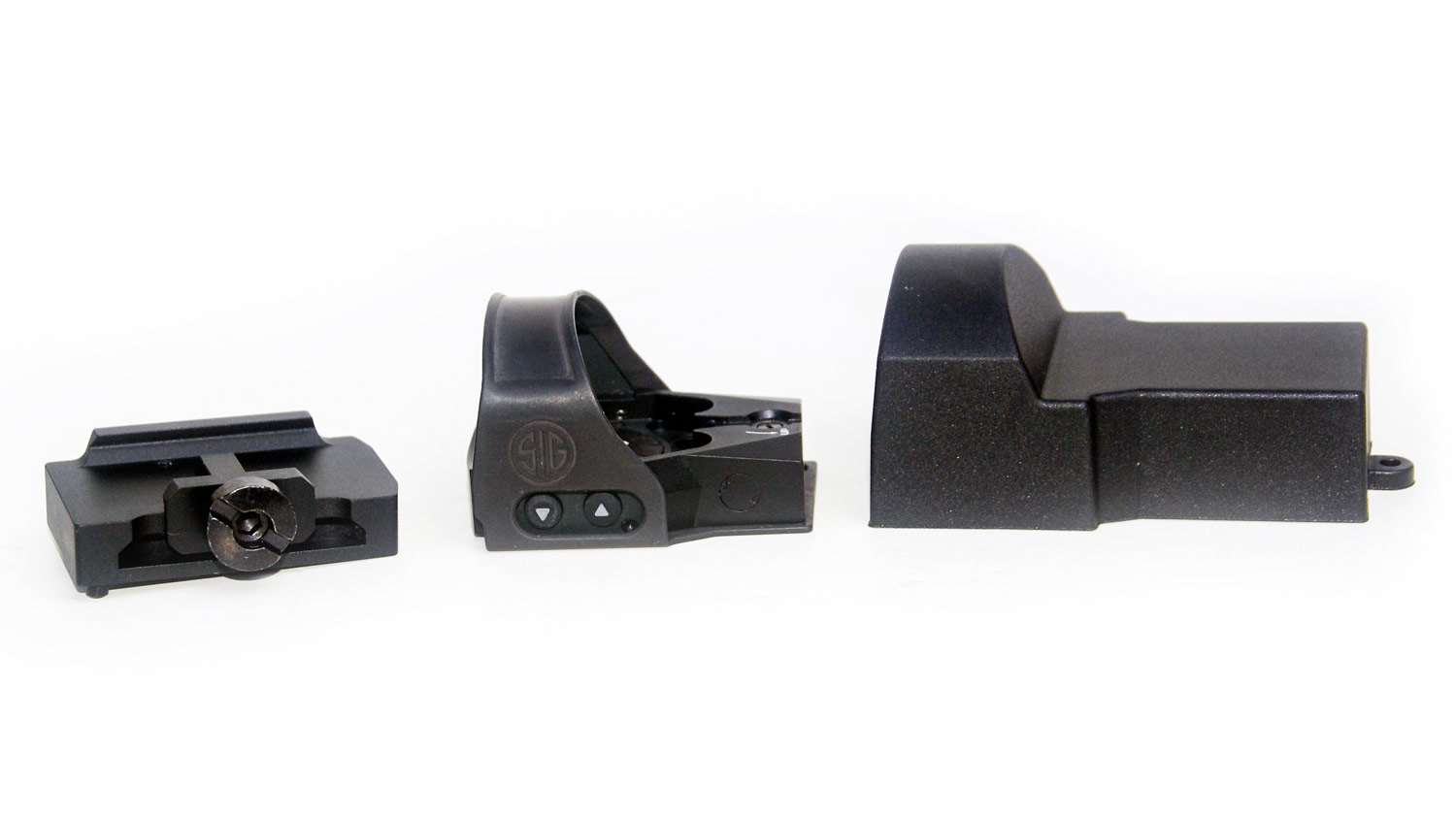
SIG wasn’t kidding about the power of the new emitter package. It was brighter than any 3 MOA dot I’ve seen. Dialing it down four stops from max gave me a precise dot to quickly zero the sight, and three stops down gave me the dot I wanted during a subsequent Steel Challenge match.
The Romeo1 Pro gives up none of the positives of the original. It just adds a few of its own.
Romeo3 Max
Reflex sights continue to be hot items in action-shooting competition, and when SIG introduced its Romeo1 I thought it was one of the most user-friendly optics available. SIG’s new Romeo3 Max, designed with input from SIG Team Captain Max Michel, doesn’t change that. It just makes it bigger and with more options.
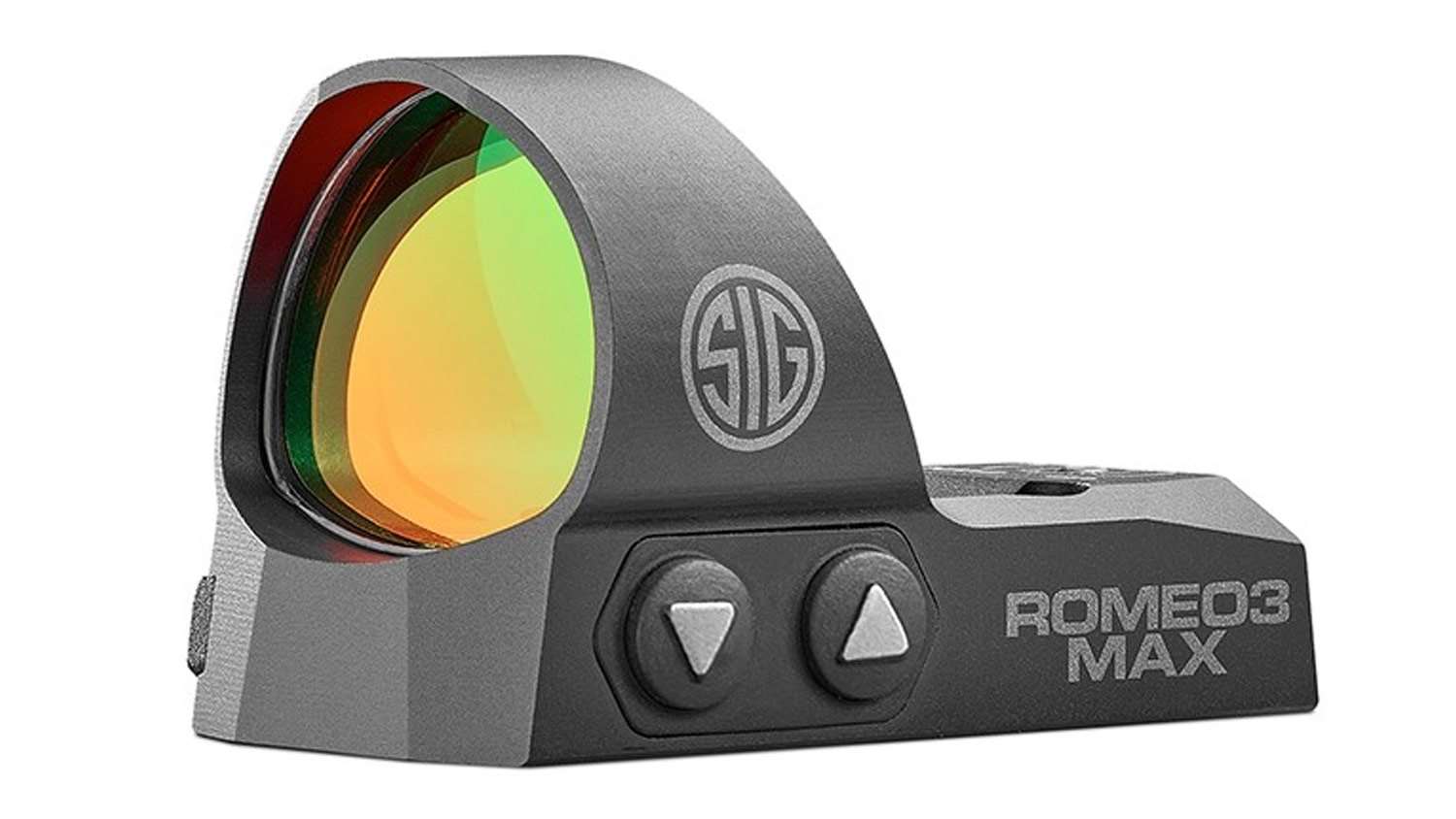
The Romeo3 Max ($719.99) is available with either a 3 or 6 MOA dot. It features 1x magnification, with an overall length of 2.1 inches, a width of 1.3 inches, a height of 1.4 inches and weighs 1.5 ounces. The sight window is a full 30 mm, and includes a nice molded-rubber lens cover that slips on and off easily.
A readily available CR2032 battery powers the sight. The battery compartment is located on the right side. Two small screws provide access via a supplied 1.5mm hex wrench. Remove the screws, slide the battery tray out, insert the battery, slide the tray back in and re-install the screws. It’s a sturdy system that does not require the sight be removed from the mount. It also prevents “battery/contact” bounce that can occur with a loosely fitting battery compartment lid.
Operating controls are the same as the Romeo1—up and down buttons on the left side. To turn the sight on press either button for 2 seconds. To turn it off do the same. When turned on it will be at the previous brightness level set. To adjust brightness levels, press the up or down button. When the maximum brightness is reached, the dot will blink five times to let you know.
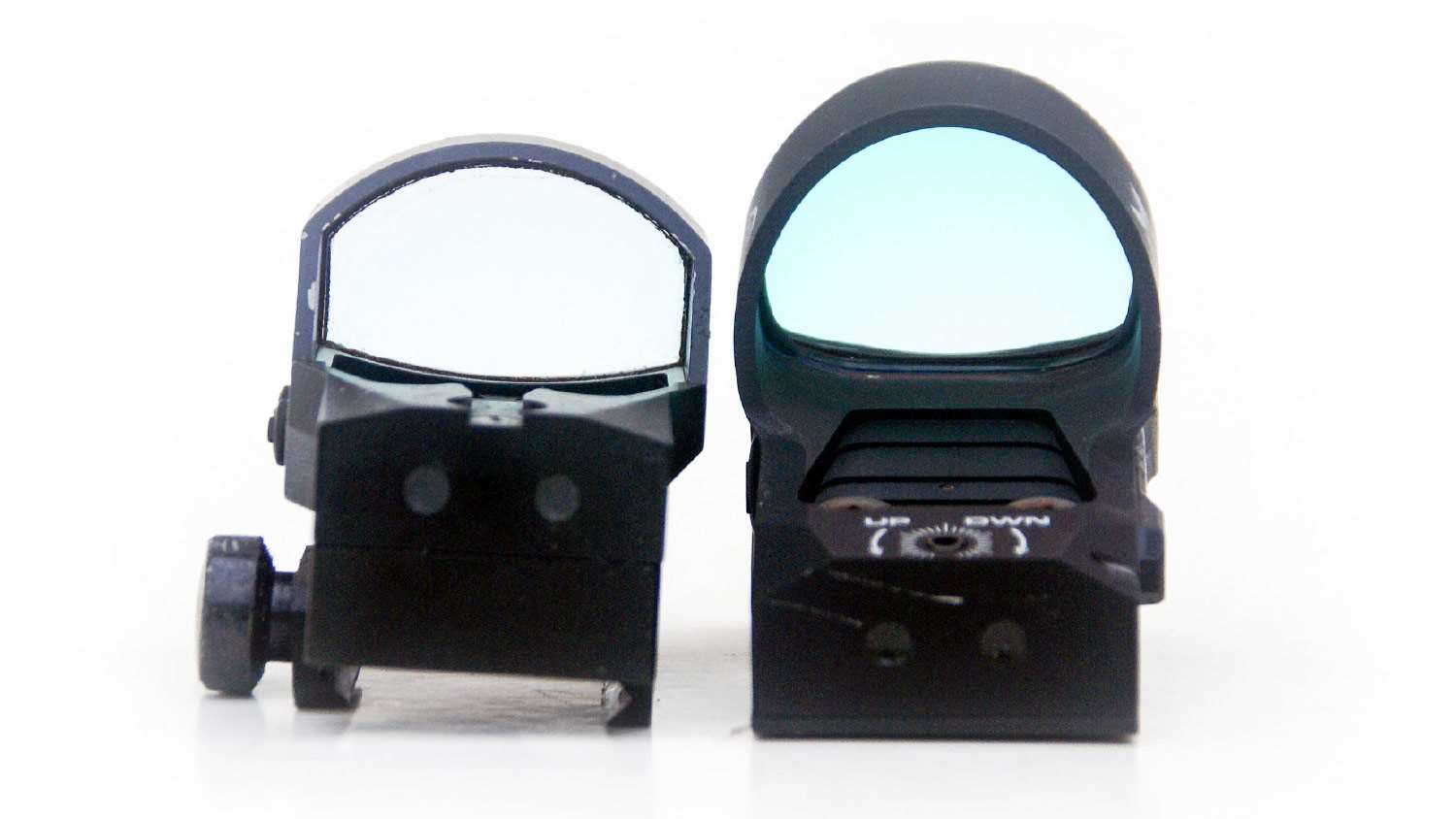
Like the Romeo1 Pro, the Romeo3 Max features MOTAC. When the sight is turned on and detects no movement for 2 minutes it goes to sleep, and the dot turns off. The first movement wakes it up, and the dot comes back on at the previously set brightness level. I ran four tests with a stop watch and it worked every time.
The sight ships with a Picatinny Rail mount, CR2032 battery, 1.5mm hex wrench, a 2.5mm hex wrench for the Picatinny mount, mounting screws and lens cover.
Using the included Picatinny rail mount, I installed the Romeo3 Max on my Ruger Take Down Lite. The instruction manual notes that there are 12 brightness settings—10 for ambient light and two NV.
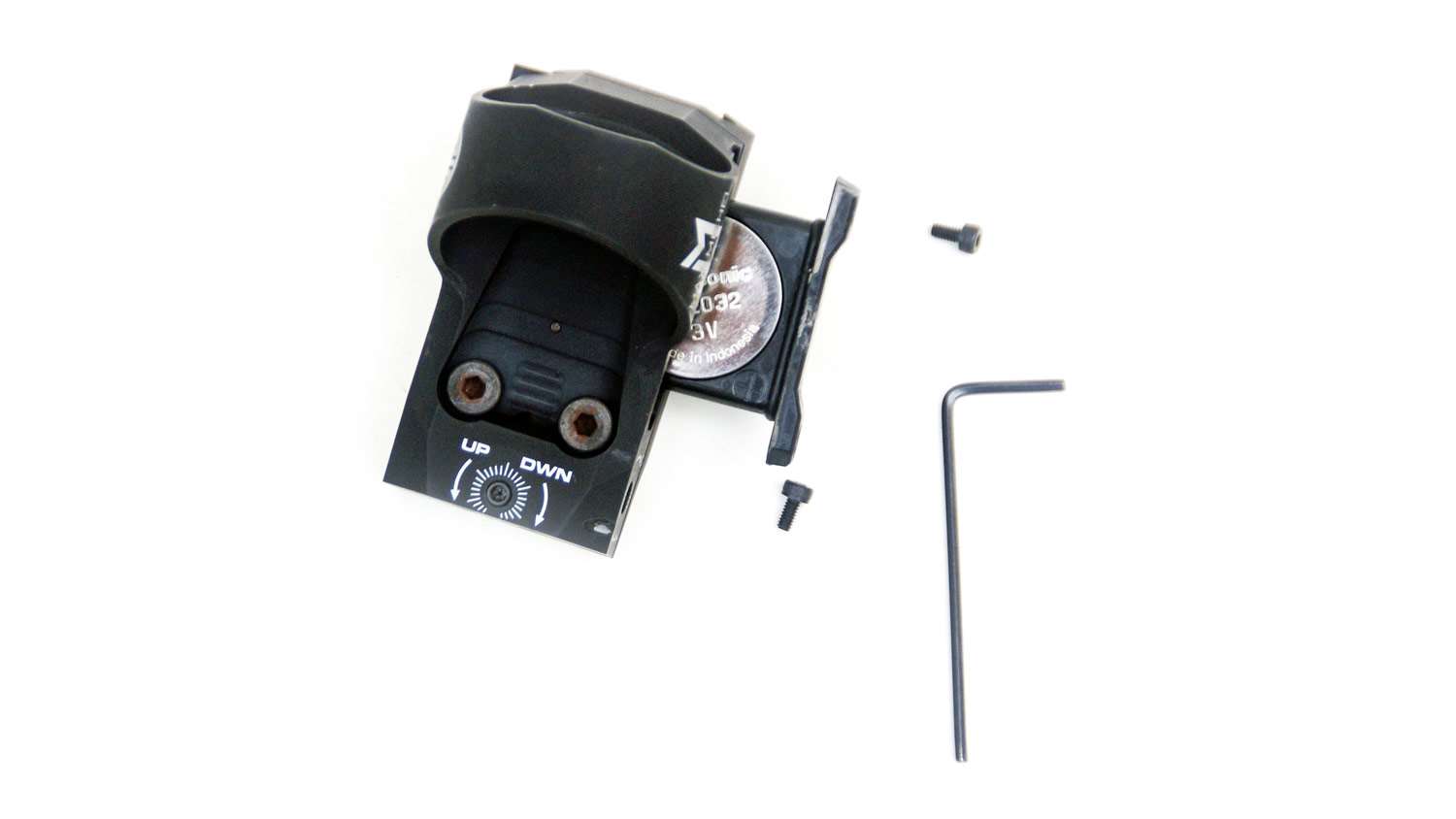
Under normal daylight conditions on my range, only the top six settings were visible. Checking inside in a darkened room, the seventh position down became visible. I assume the rest would work with NV gear, but lacking that I could not check.
However, the six visible outdoor settings were more than enough to get the dot I wanted. There was a noticeable bloom on the two highest powers, but the bloom vanished when I pointed the sight directly toward a cloud covering the sun. That’s not much different than facing a low early morning sun behind the targets. There was plenty of power to burn through that and enough brightness adjustments to achieve a perfect dot for other lighting conditions—including indoor ranges.
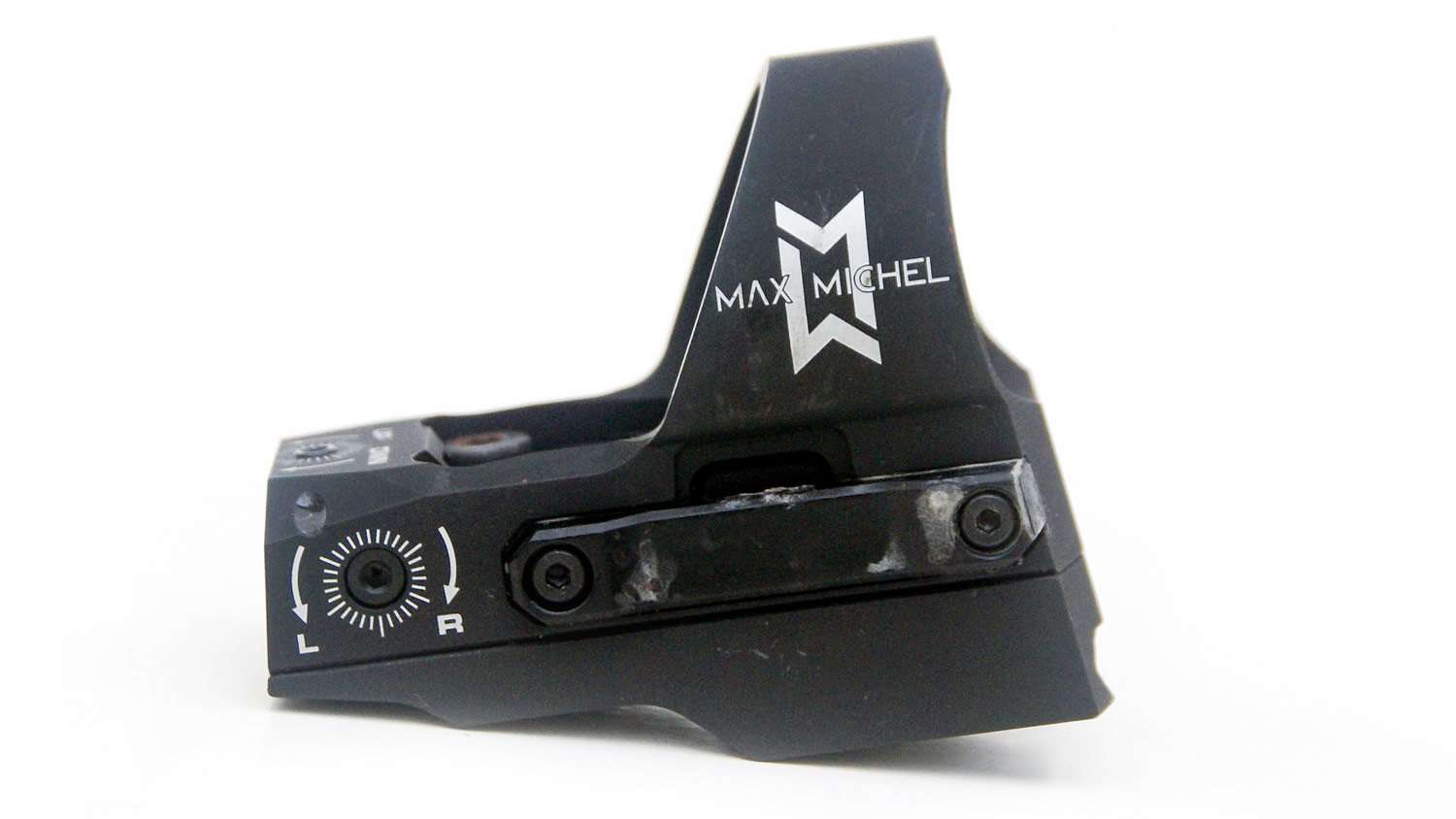
The Romeo3 Max uses the same 1.5mm Allen wrench that opens the battery compartment to adjust windage and elevation. Given that I have a well-documented history of losing small hex wrenches, I stopped by my local Ace Hardware store and picked up a couple of spares. They’re small and easy to lose. But they worked quite well, and the sight in from a 25-yard bench took just six rounds. Each click moves the sight 1 MOA. Cranking the brightness down to the fourth position from maximum provided a perfect dot under a noon sun. The first three-round group was 5 inches low and 3 inches right. Factoring in the stated adjustment increments, and translating MOA into 25-yard settings, I made a guess and cranked them in. The second three-round group was dead center. The adjustments seem pretty precise.
Multiple target transition drills were next. The window on the Romeo3 Max is noticeably larger than the Romeo1 I previously had on the Ruger. It did speed target transitions and provided an excellent sight picture. The adjustments allowed me to dial in the perfect dot size for any outdoor range light conditions.
Direct handgun slide-mounting options are, at the moment, limited to the SIG P320 X-Five with a Springer Precision Romeo3 adapter plate. Other adapter plates will be on the way. However, the Picatinny rail mount allows it to be easily attached to any rail, which makes it a good choice for rimfire pistols and rifles, PCC or Open Class pistols.
See more: SIG Super Target Air Pistol, Air Gun Pellets














